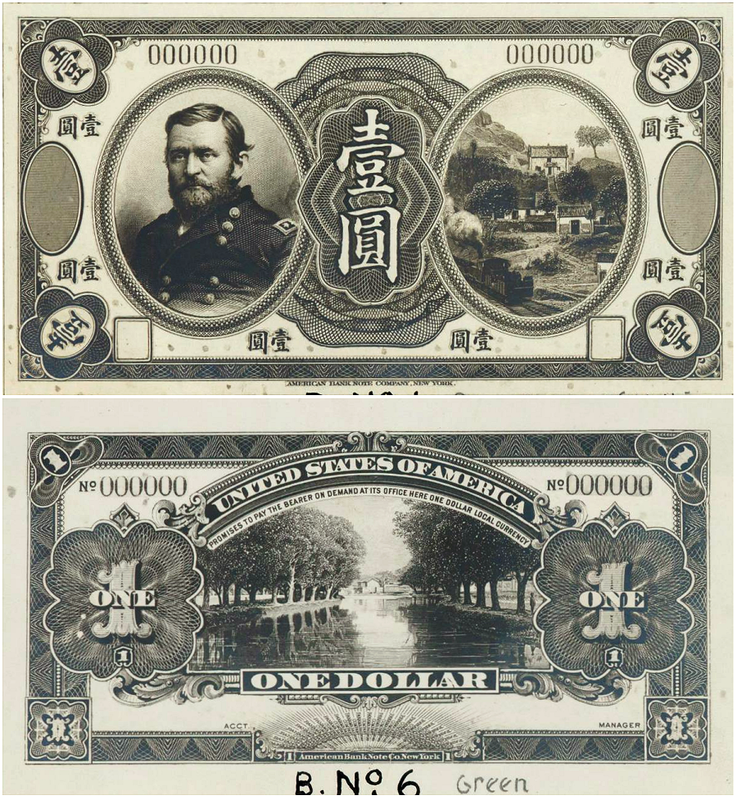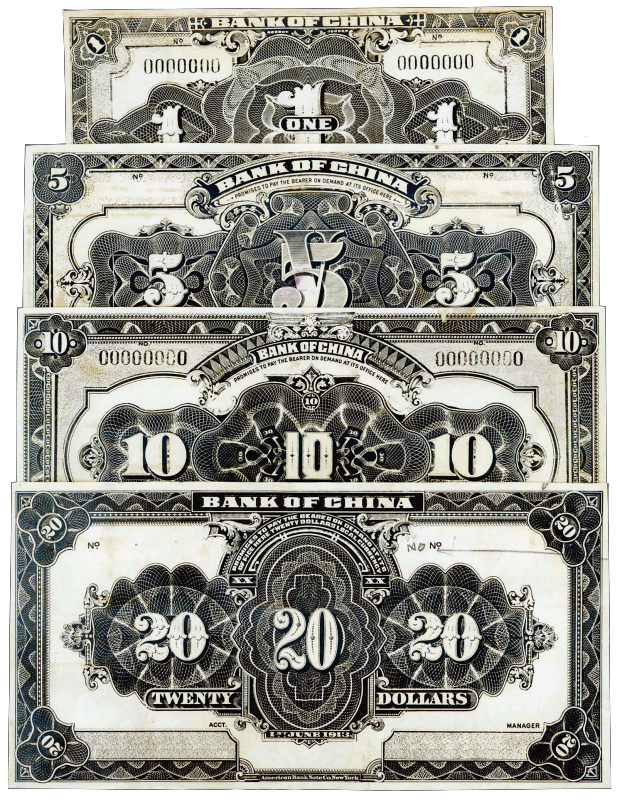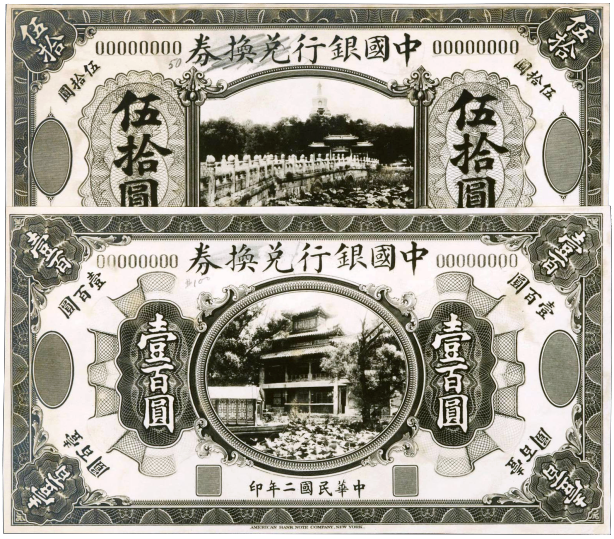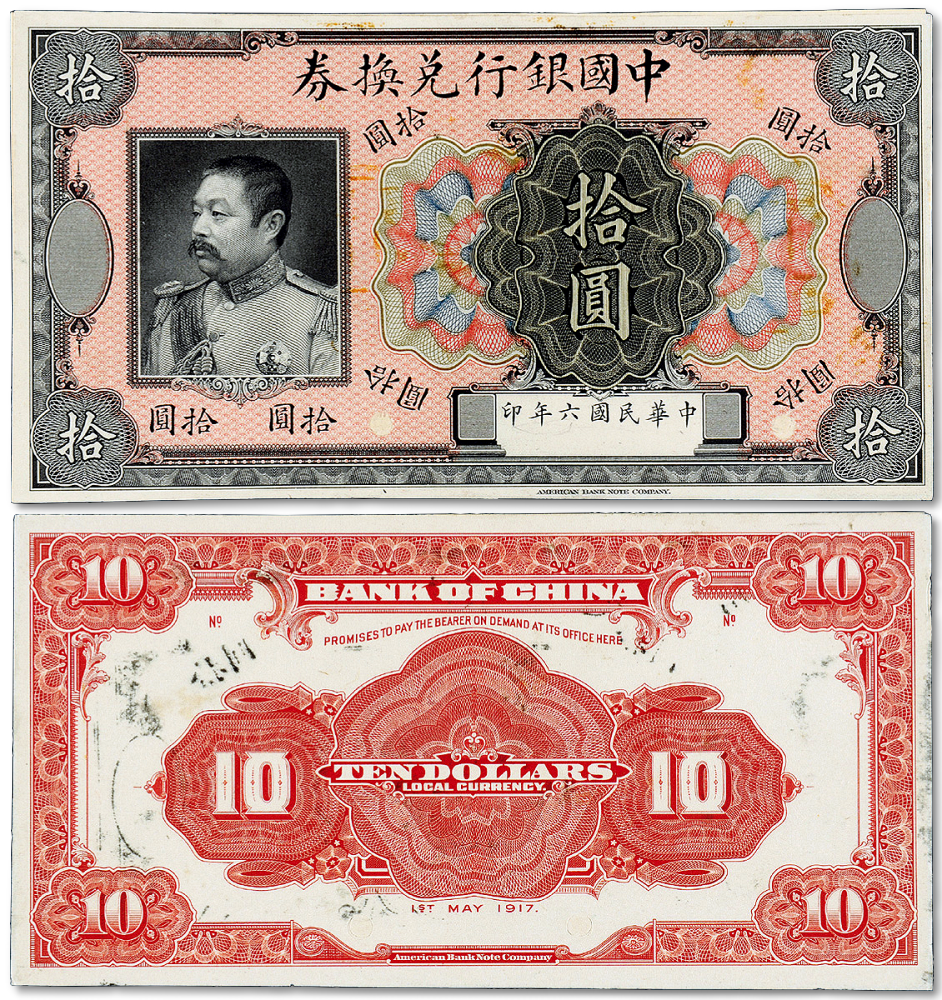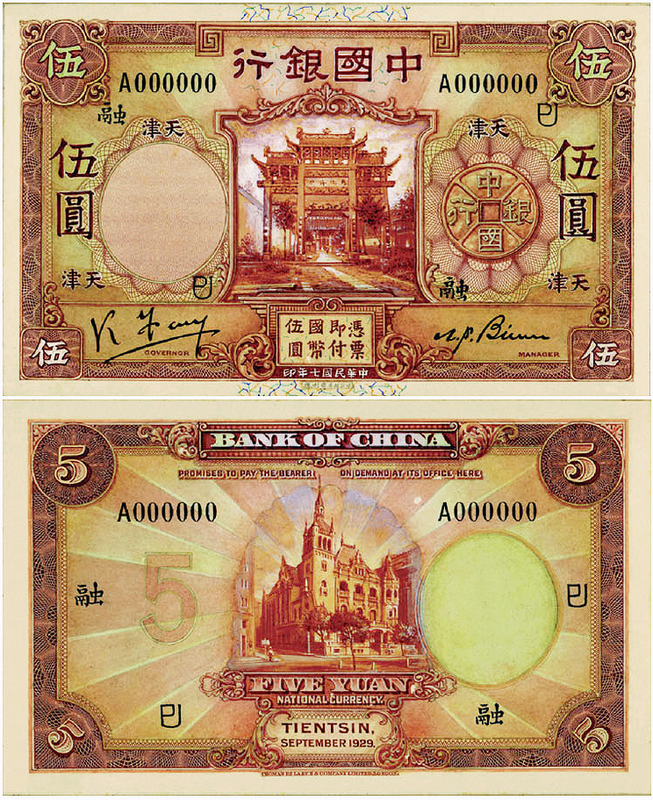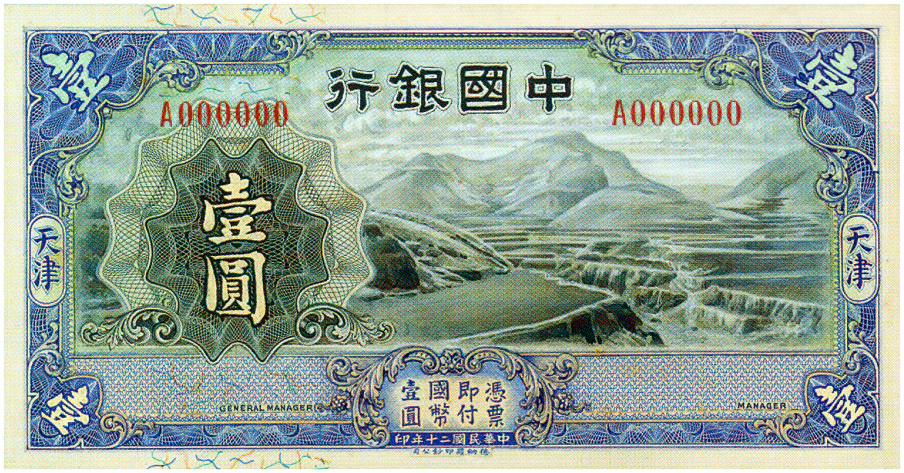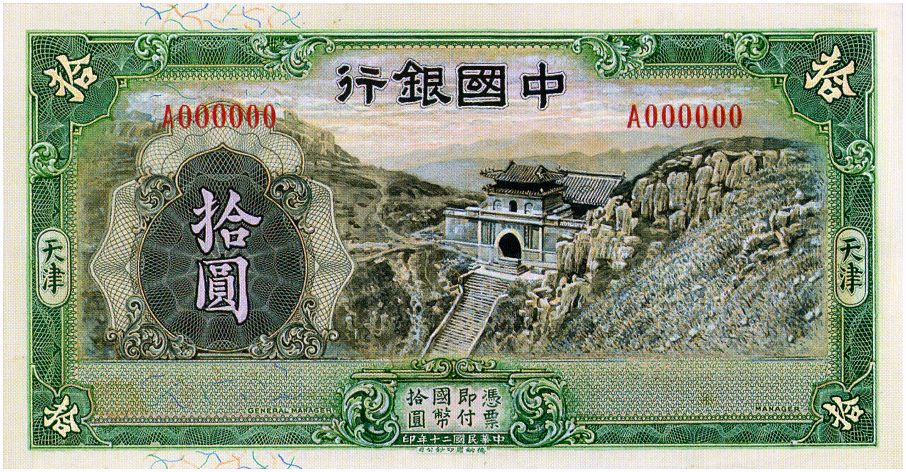Nonesuch Notes - China
|
Updated: March 03 2018
|
A display of unused designs, specimens and little known notes by government banks and other major issuers. These notes are not displayed to scale. More examples will be added periodically.
This section focuses on unissued designs and alternate trial versions of the paper money of the government Bank of China, which issued currency until 1942.
This section focuses on unissued designs and alternate trial versions of the paper money of the government Bank of China, which issued currency until 1942.
To 1942
|
An American Banknote Company developmental proof 1 Dollar presuambly for the transition from the 1909 issues for the Ta Ching Government Bank to the first (1912) issues of it's reorganisation as the Bank of China. As the portrait and bank title were not yet fixed, the ABNC used a portait of General and later President Ulysses S. Grant, and the title 'United States of America'. The vignettes are of course the same Chinese railway and canal scenes used through 1909-1913. |
Below: A $20 design for the June 1913 series; the design - and the denomination - was never used. The architectural vignettes in the developmental proof (left) are photographs. The specimen (right) shows that the design was fully developed.
The front depicts the Heavenly Vault from the Altar of Heaven platform. The roof of the Temple of Heaven can be glimpsed beyond. The Wenchang Pavilion at the Summer Palace in Peking (Beijing) appears on the back.
The front depicts the Heavenly Vault from the Altar of Heaven platform. The roof of the Temple of Heaven can be glimpsed beyond. The Wenchang Pavilion at the Summer Palace in Peking (Beijing) appears on the back.
Below: photographic proofs for a proposed Bank of China 'local currency' series of June 1st 1913, by the American Banknote Company. This series depicts famous monuments in the vicinity of Peking (Beijing). It is unknown whether the original proofs survive. The 50 and 100 show the penciling out of the final three characters of the longer bank/issue title.
|
Two varieties for the design of a 1 Yuan of 1914, with two Chinese bank/issue titles for the Bank of China; never used. These at first appear to be the front designs for the back designs shown immediately below, but the dating reveals otherwise. The vignette (a photograph) depicts a bridge with the White Dagoba in Beihai Park, a Tibetan style Buddhist monument in Peking (Beijing), built to honour the visit of the 5th Dalai Lama in 1651 (the White Dagoba is in the background, rising above the treeline, and is difficult to see). A different version of this scene was used for the 1918 (and 1930) 5 Yuan/Dollar issues. |
|
Right: photographic proofs of a little known proposed design for a series of 1915, depicting Huang-Ti. This was most likely an alternative design to that which appears in the SCWPM as 37D-37F; itself an unissued series which survives as proofs without serials, signatures or branch names. The proposed design is unusual for the time and issuer in having Chinese text only. |
|
Right: a 10 Dollars (local currency) of the unissued series of 1917 depicting President Li Yuanhong ('Tsao Kuan'). Li resigned in July 17 1917 due to his experiences - including briefly imprisonment - during a failed attempt by duplicitous General Zhang Zun to restore the last emperor Pu Yi. Consequently, this currency series had to be cancelled. This is one of the few of the 'failed' series of notes that does appear in the SCWPM (P 37L). |
Below: a developmental proof of the 10 Yuan/Dollars of the 1918 series, with one of the many varieties of this issued note. The vignette of the Peking (Beijing) Temple of Confucius is still a photograph on the proof. Though seemingly identical in design, various small differences occur between the proof and the final issued note. The two most noticeable are the large Chinese denomination characters which flank the vignette, and, the upper border of the branch name cartouche on the back.
|
An impressive hand painted design for a 5 Yuan of 1929 for the Tientsin branch, by a designer at De La Rue. This was unadopted and apparently not deveoped past this stage of the design process. The front depicts an unidentified paifang (pailou) gateway with a temple hall beyond. The reverse shows the old German club 'Concordia' on the Shanghai Bund. After the end of WWI, the bank purchased the property which had been confiscated by the government, and opened a branch a here. By 1935, this building was demolished, and in 1936 the foundation was laid for the new national headquarters of the Bank China. The new tower though nearly completed and usable in 1937, was disrupted by the outbreak of the Sino-Japanese war. It was not fully finished or fully functioning as the banks headquarters until 1946. |
|
A hand painted design for a 10 Yuan of 1931, for Thomas De La Rue & Co, and of the same series as the 1 Yuan above. The vignette depicts the Southern Heavenly Gate of the important and ancient temple complex on Mount Tai in Shantung (Shandong); different views of this site appear on several issues by the Bank of China, Central Bank of China and the Shantung Provincial Banks. A similar though more 'gate-focused' vignette appears on the Central Bank of China 20 Yuan of 1945 (!948) printed by the American Banknote Company. |
